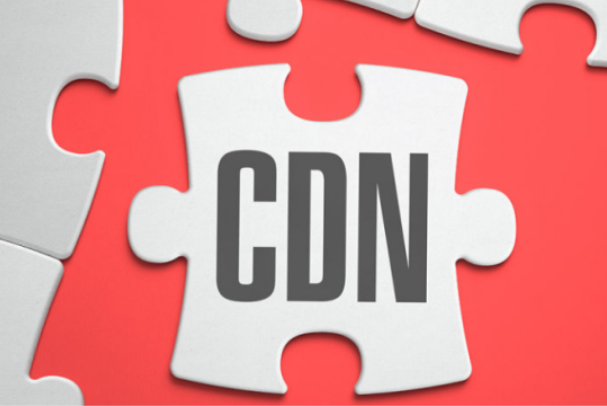
Introduction
With the increasing reliance on online services, Distributed Denial of Service (DDoS) attacks have become a significant cybersecurity threat to businesses of all sizes. These attacks aim to overwhelm a website’s resources, causing downtime, slow response times, and financial losses. In severe cases, they can be used as a smokescreen for more sophisticated cyberattacks.
To combat DDoS threats, Content Delivery Networks (CDNs) have evolved into one of the most effective defenses. By distributing traffic across a network of servers, CDNs help absorb, filter, and mitigate DDoS attacks before they reach the origin server. In this article, we will explore how DDoS attacks work, their potential damage, and how CDN technology provides an intelligent and robust security solution.
1. Understanding the Different Types of DDoS Attacks
DDoS attacks come in various forms, and understanding their types is crucial to implementing effective mitigation strategies. The most common DDoS attack types include:
A. Volumetric Attacks (Layer 3 & 4)
These attacks flood a network with excessive traffic to exhaust bandwidth and prevent legitimate users from accessing the website. Examples include:
UDP Flood: Sending large amounts of UDP packets to random ports, forcing the server to respond with ICMP requests, overloading its resources.
ICMP Flood (Ping Flood): Overwhelming a server with excessive ICMP (ping) requests, leading to resource exhaustion.
B. Protocol Attacks (Layer 3 & 4)
These attacks exploit vulnerabilities in network protocols to exhaust system resources. Common examples include:
SYN Flood: Exploiting the TCP handshake process by sending a high volume of SYN requests without completing the connection, keeping the server occupied.
Ping of Death: Sending malformed or oversized packets that crash or freeze the target system.
C. Application Layer Attacks (Layer 7)
These attacks target the application layer (Layer 7) by simulating real user behavior, making them harder to detect. Examples include:
HTTP Flood: Sending a large number of HTTP GET or POST requests to overload web servers.
Slowloris: Holding connections open for an extended period by sending partial requests, consuming all available server connections.
2. The Impact of DDoS Attacks on Websites and Businesses
DDoS attacks are not just an inconvenience; they can cause severe damage, including:
Website Downtime: A prolonged DDoS attack can take a website offline for hours or even days.
Loss of Revenue: E-commerce websites can suffer significant financial losses during downtime.
Reputation Damage: Users may lose trust in a business if they experience frequent downtime.
Security Risks: Some DDoS attacks serve as distractions while hackers exploit vulnerabilities to steal sensitive data.
To mitigate these risks, organizations must adopt a proactive security strategy, and CDNs offer one of the most effective solutions.
3. How a CDN Protects Websites from DDoS Attacks
A CDN (Content Delivery Network) consists of a globally distributed network of edge servers that cache and deliver website content closer to users. Beyond improving speed and performance, CDNs offer advanced security measures to mitigate DDoS attacks at multiple levels.
A. Traffic Distribution & Load Balancing
Instead of routing all requests to a single server, CDNs distribute traffic across multiple servers in different geographic locations. This means:
Attackers cannot easily overwhelm a single server, reducing the impact of volumetric DDoS attacks.
Load balancing ensures that incoming requests are handled efficiently, keeping the website accessible.
B. Origin Server Protection & IP Masking
CDNs act as an intermediary between users and the origin server, hiding the actual IP address of the website. This makes it difficult for attackers to directly target the main server, reducing the risk of:
Direct-to-origin DDoS attacks.
IP-based attacks attempting to bypass security measures.
C. Rate Limiting & Bot Filtering
CDNs can detect abnormal traffic patterns and mitigate attacks through:
Rate Limiting: Restricts the number of requests from a single IP in a given time, preventing automated bots from overwhelming the server.
Behavioral Analysis: AI-driven CDNs analyze user behavior to distinguish between legitimate visitors and malicious bots, blocking harmful traffic.
D. Anycast Network for DDoS Absorption
Many CDNs use Anycast routing, which directs incoming traffic to the nearest available server. In the case of a DDoS attack, the malicious traffic is spread across multiple servers, preventing congestion and keeping the website operational.
E. Web Application Firewall (WAF) for Layer 7 Protection
DDoS attacks targeting the application layer are often difficult to detect. A WAF (Web Application Firewall) integrated with a CDN helps:
Block SQL injections, cross-site scripting (XSS), and other web-based attacks.
Filter out HTTP flood attacks by analyzing request headers, patterns, and payloads.
F. AI-Powered Threat Detection & Real-Time Analytics
Advanced CDNs leverage AI and machine learning to:
Continuously monitor traffic patterns.
Identify and block DDoS attempts in real time.
Adapt to evolving attack strategies with automated mitigation.
4. Choosing the Right CDN for DDoS Protection
Not all CDNs offer the same level of security. When selecting a CDN provider, businesses should consider:
Global Network Reach: A broader network ensures better attack mitigation.
Integrated DDoS Protection: Look for CDNs with built-in DDoS mitigation rather than relying on third-party services.
Custom Security Configurations: The ability to create custom security rules for specific threats.
Scalability & Performance: A CDN should be able to handle sudden traffic spikes without affecting legitimate users.
24/7 Monitoring & Response: Some CDNs offer always-on protection with real-time threat detection.
Popular CDN providers offering DDoS protection include Cloudflare, Akamai, Fastly, and AWS CloudFront.
Conclusion
DDoS attacks are increasingly sophisticated and frequent, making proactive defense essential for any online business. CDNs serve as an effective first line of defense by distributing traffic, protecting the origin server, filtering malicious requests, and providing AI-driven security monitoring.
For businesses that rely on website availability, performance, and security, implementing a CDN with DDoS mitigation capabilities is a critical step in safeguarding digital assets and maintaining user trust.

